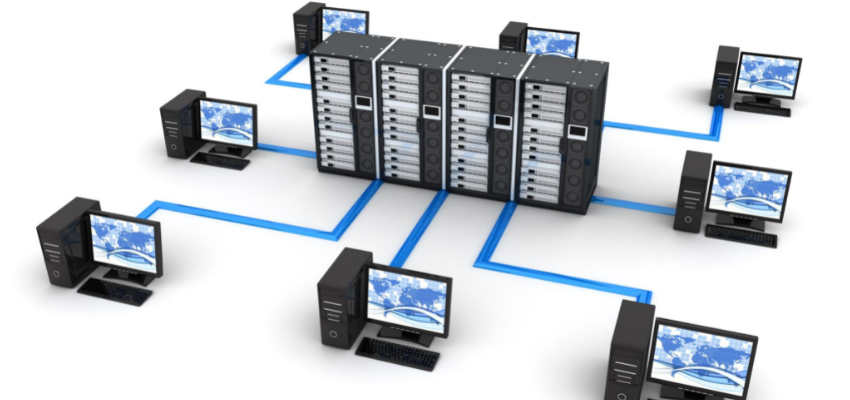In an era where efficiency, transparency, and speed are no longer optional but expected, governments around the world are embracing automation in government to modernize operations, reduce costs, and enhance citizen services. While skeptics worry about bureaucracy and outdated systems, the reality is that automation is not just a trend—it’s a necessity.
Automation in government refers to the strategic use of technologies like robotic process automation (RPA), artificial intelligence (AI), and machine learning (ML) to digitize routine tasks, streamline processes, and empower decision-making across public sector agencies.
In this detailed exploration, we’ll uncover:
- What government automation really means
- Key benefits and use cases
- Tamer Badr’s expert take on the digital future
- The limitations and challenges of adoption
- Answers to FAQs from citizens and civil servants
- Real-world reviews from public service professionals
- Why a hybrid approach may be the golden mean
“People Are Always Asking”: Why Automate Government Services at All?
It’s a fair question. Here’s why automation matters now more than ever:
- Citizens demand 24/7 services, not 9-to-5 desks
- Red tape wastes time and tax dollars
- Manual processes invite human error
- Governments face chronic understaffing
To address these problems, automation offers scalable, consistent, and secure operations—from filing a tax return to processing a business license in minutes instead of months.
What Is Automation in Government?
Government automation uses digital tools to take over tasks typically handled by public employees. These might include:
- RPA (Robotic Process Automation): Software bots that follow rules to complete repetitive tasks like data entry
- Chatbots & Virtual Assistants: Answer FAQs, assist with application forms, or help schedule appointments
- AI Algorithms: Help identify fraudulent benefits claims or predict service demand spikes
- Document Processing: Scanning, extracting, and validating structured data from files
In simple terms, automation frees up civil servants from grunt work, letting them focus on policy, planning, and helping the public.
How Governments Are Using Automation
Here’s a breakdown of automation in action across global and local agencies:
1. Tax Collection and Processing
- Automated systems calculate tax obligations and send reminders
- Reduces evasion and increases compliance
- Cuts processing delays from weeks to hours
Drawback: Errors in data input can lead to incorrect tax assessments if not reviewed periodically.
2. Licensing and Permits
- Applications processed in real-time through automated validation
- Applicants receive instant approvals or requests for more information
Drawback: Over-automation may limit human discretion in unusual edge cases.
3. Fraud Detection in Social Services
- AI analyzes claim patterns to detect anomalies
- Saves millions in misallocated welfare or unemployment benefits
Drawback: Algorithmic bias could unjustly flag legitimate claims.
4. Smart City Infrastructure
- Automation helps manage traffic, power, and water services using sensor data
- Improves public safety and resource management
Drawback: High upfront costs and privacy concerns around data collection.
Expert Opinion: Tamer Badr, CEO of Singleclic
Tamer Badr, a veteran digital transformation strategist and the founder of Singleclic, believes government automation must go beyond efficiency metrics:
“Automation in government is not about replacing humans—it’s about enhancing human potential. By removing repetitive roadblocks, public workers can focus on value creation. But it must be designed with transparency and accountability in mind.”
He adds:
“We at Singleclic work closely with government bodies to build solutions that respect both citizen privacy and institutional integrity.”
Advantages of Automation in Government
Let’s weigh the true benefits:
✔️ Improved Efficiency
- Automates repetitive tasks like data entry and form validation
- Reduces human error and increases processing speed
✔️ Enhanced Transparency
- Digital audit trails make it easier to track decisions and actions
✔️ Better Citizen Experience
- Shorter wait times and 24/7 service access
✔️ Cost Savings
- Fewer man-hours required for simple processes
- Optimizes budget allocation
✔️ Increased Compliance
- Fewer errors in tax filings, social services, and procurement workflows
Potential Pitfalls to Watch Out For
Even with its strengths, automation has some real limitations:
- Over-reliance on Algorithms: Machines can’t understand context like a seasoned civil servant.
- Cybersecurity Risks: Centralized systems can be attractive targets for hackers.
- Job Displacement Fears: Workers may resist automation without proper training programs.
- Equity Concerns: Not all citizens are digitally literate; systems must be inclusive.
- Initial Costs: The startup costs for automation systems can be high.
Reviews from the Frontlines: What Public Servants Say
🚀 “We reduced permit turnaround time by 85% in just 6 months.”
— Building Inspector, Cairo Municipal Authority
🧑💻 “I used to manually sort 500+ applications a week. Now I can spend time reviewing and supporting special cases instead.”
— Social Services Officer, Alexandria
🛑 “The system flagged my benefits claim incorrectly, and it took a human reviewer to fix it.”
— Anonymous Citizen, Egypt
These insights highlight the need for human-AI collaboration—not one replacing the other.
Frequently Asked Questions (FAQ)
Q1: Will automation take government jobs?
No—but it will change them. Roles will shift from clerical to analytical and supervisory. Governments must invest in upskilling.
Q2: How secure are automated systems?
Security depends on implementation. Encryption, firewalls, and access controls are essential. Governments must work with certified vendors.
Q3: Is automation expensive to implement?
Initial costs may be high, but the ROI is measurable. Automated processes often pay for themselves within a few years through savings and efficiency.
Q4: What if a citizen can’t access the internet or doesn’t understand digital forms?
Hybrid models are best—offering both automated and human support ensures equity and inclusion.
Best Practices for Successful Government Automation
To maximize value and minimize disruption, follow these tips:
- Start Small: Automate high-volume, low-risk tasks first.
- Engage Stakeholders Early: Get buy-in from civil servants and citizens alike.
- Focus on Outcomes: Automation should improve service quality, not just save money.
- Ensure Data Integrity: Garbage in, garbage out—clean data is crucial.
- Train Staff Continuously: Support staff through the transition with skills development.
What’s Next? The Future of Automation in Government
Governments are now experimenting with:
- AI-powered legislation drafting
- Blockchain-based document verification
- Predictive policing (controversial and needs ethical oversight)
- Machine learning for urban planning
But one thing is clear: smart automation, guided by human empathy and ethical boundaries, is the way forward.
“Technology must serve the citizen, not the other way around,” says Tamer Badr. “That’s the principle that guides our work at Singleclic.”
Get Started: Explore Government Automation Solutions
To learn more about automation in government and how it can be tailored for your agency, visit Singleclic’s Government Solutions page.
Here you’ll find:
- Case studies
- Tailored services
- Real-time support options
Final Thoughts
Automation in government is not about turning agencies into machines—it’s about making them work better for people. Done right, it leads to transparency, agility, and fairness. But it requires careful planning, citizen-first design, and continuous improvement.
As Tamer Badr aptly concludes:
“Automating for efficiency is great—but automating for empathy? That’s where the real value lies.”









